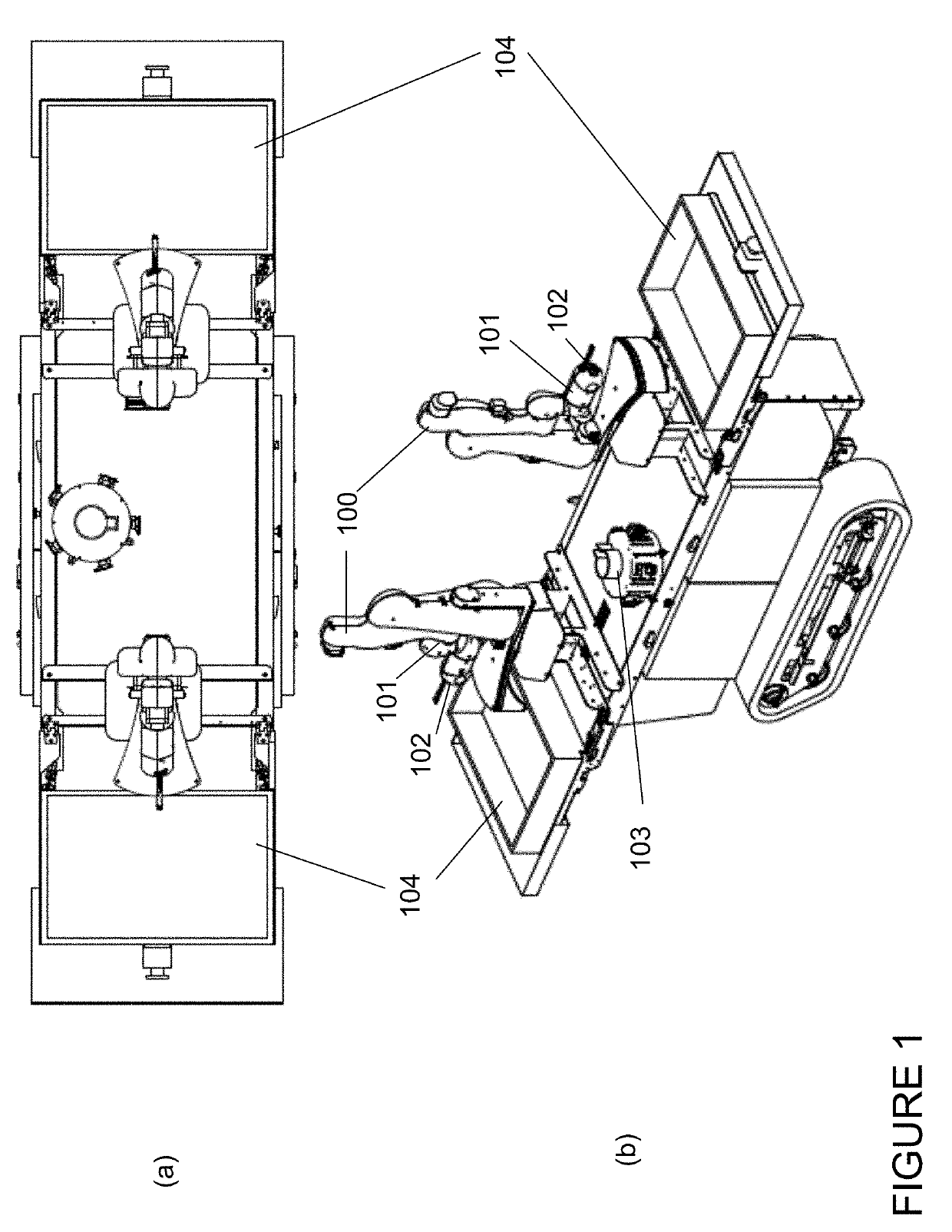Robotic fruit picking system
a robotic and fruit picking technology, applied in the field of robotic fruit picking, can solve the problems of large administrative burden on the producer, risky and expensive hard picking seasons, and inability to efficiently and destructively use mechanical methods to harvest crops such as whea
- Summary
- Abstract
- Description
- Claims
- Application Information
AI Technical Summary
Benefits of technology
Problems solved by technology
Method used
Image
Examples
loop embodiment
[0313]In a second embodiment of the invention the select and exclude phases of the picking sequence described earlier is performed by means of actuating a loop e.g. of wire. The diameter, position and orientation of the loop is programmatically controlled and actuated such that it may:[0314]i. have an arbitrarily small volume on its approach to the target fruit;[0315]ii. increase in diameter, to be larger than the estimated diameter of the target fruit, as it is moved in parallel with, and centred on, the major axis of the target fruit and in the direction of the juncture between the target fruit and its stalk and;[0316]iii. have an arbitrarily small diameter once it has moved past the juncture of the stalk and target fruit.
[0317]In this way the loop will select the stalk of the target fruit from other objects in the environment (e.g. other produce, leaves, growing infrastructure etc.) the stalk can then be manipulated such that the target fruit may be moved away from other objects ...
jaw embodiment
Loop-and-Jaw Embodiment
[0329]As shown in FIGS. 24-27, in a fourth embodiment of the invention, the second and third embodiments are combined such that a loop performs the select and exclude steps and the jaws perform the grip and the cut steps.
[0330]FIG. 20 shows the main mechanical constituents of the loop and jaw assembly (the actuation mechanism of the jaw is omitted for clarity).
[0331]FIG. 21 shows the loop and jaw assembly, shown with component 11, the loop, extended.
[0332]FIG. 22 shows an exploded diagram of the main constituent parts of the loop and jaw assembly (the loop is omitted for clarity).
[0333]FIG. 23 shows the components of the loop actuation mechanism. The loop is extended and retracted by means of the rotation of the drum (16). Both the drum and loop (11) sit within housing (12) and (17), to constrain the motion of the loop during actuation.
[0334]FIG. 24 shows the loop / jaw assembly on its approach vector towards the target fruit.
[0335]FIG. 25 shows the loop extende...
PUM
 Login to View More
Login to View More Abstract
Description
Claims
Application Information
 Login to View More
Login to View More - R&D
- Intellectual Property
- Life Sciences
- Materials
- Tech Scout
- Unparalleled Data Quality
- Higher Quality Content
- 60% Fewer Hallucinations
Browse by: Latest US Patents, China's latest patents, Technical Efficacy Thesaurus, Application Domain, Technology Topic, Popular Technical Reports.
© 2025 PatSnap. All rights reserved.Legal|Privacy policy|Modern Slavery Act Transparency Statement|Sitemap|About US| Contact US: help@patsnap.com



